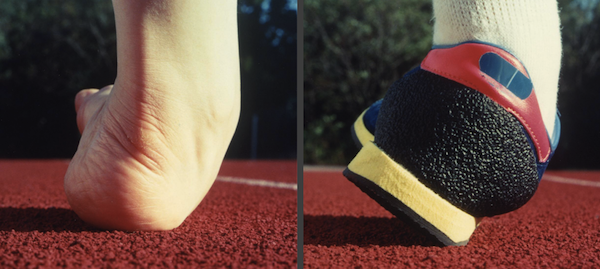Inversion ankle sprain is a very common injury. It's easy to pick up an ankle sprain, even doing the lightest of activities. It is estimated that around 25,000 people each day experience different severities of an ankle sprain. More often than not, the pain associated will begin to dissipate soon after the injury occurred. For ankle sprains of a higher severity, swelling can occur, and the ankle can become difficult to stand on.

What Are Inversion Ankle Sprains?
An ankle is sprained when the ligaments within the ankle joint tear. Ankle sprains most commonly occur on the outside part of the ankle from numerous activities. It commonly happens whilst playing sports, and can lead to bruising, swelling, pain, and the incapability to put pressure upon the affected ankle.
An inversion ankle sprain happens when the foot rolls underneath the ankle in an unnatural position.
Grades of Inversion Ankle Sprain
The severity of inversion ankle sprains is measured in grades. Below are the three grades and what signs to look out for if you believe to have sprained your ankle, which can helpdetermine the severity of your injury.
Grade I: This refers to minor tearing of the ligament. The ankle joint is still somewhat stable and the person can still walk (albeit with slight difficulty). This may be accompanied with pain, swelling, bruising and stiffness.
Grade II: Grade II refers to moderate tearing of the ligament. The ankle is slightly unstable, and walking will become difficult and provoke pain. This can come with severe pain, bruising, and swelling.
Grade III: Grade III, being the most severe, is a complete tearing of the ankle ligament. The ankle becomes entirely unstable, and walking on the ankle will be impossible. This will involve severe pain that should dissipate as long as you rest the ankle and place no pressure whatsoever on it. This type of sprain sometimes needs surgical treatment, if physical therapy does not help with recovery.
How to Treat Inversion Ankle Sprain
1. Treatment for Different Grades
The treatment for inversion ankle sprains varies depending on the severity of a person's injury.
|
Severity of Injuries |
Treatment |
|---|---|
|
Grade I Ankle Sprains |
Grade I sprains usually is cured by a method known as R.I.C.E. which stands for:
|
|
Grade II Ankle Sprains |
Grade II ankle sprains are usually treated with the R.I.C.E. method also, but naturally require more recovery time—about 4 to 6 weeks to recover to normal activities. |
|
Grade III Ankle Sprains |
A cast or a walking boot may be required to support and protect the injured ankle from further damage during the recovery process. Occasionally, surgery is needed to fix completely torn ligaments and prevent any permanent damage. |
|
Chronic Ankle Sprains |
Surgical procedures like Watson-Jones procedure, the Evans procedure and the Chrisman-Snook procedure can be performed. |
2. Other Relieve Options
Medications: NASIDs or nonsteroidal anti-inflammatory drugs can be applied to ease the pain and reduce the swelling, which is a controversial treatment approach. Aside from NASIDs, other painkiller medications like Panadol, Tylenol, and Anacin Aspirin Free can be applied as well.

Wear some protective prodcuts: Ankle braces with different shapes and functions give the ankle a lot of support and protection. Besides the braces, ankle taping is relative less expensive than ankle braces. Apply it on the injured part can help with the stability during motions.
Prevention Tips for Inversion Ankle Sprains
There are numerous things that can be done to avoid a sprain. The first thing to remember is to stretch properly before you carry out any physical activityand repeat it once you've finished. This will help to loosen the joints and help to prevent tearing.
Ensuring you wear good fitting, and appropriate shoes during physical activity will also help to avoid a sprain.
Also avoid any sharp turns or movements, as these types of movements often associated with a sprain.
If you regularly suffer from sprains in the ankle, a course of physiotherapy treatment may be suggested. This treatment can include targeted stretching and balancing exercises, therapeutic ultrasound (which helps to reduce pain and promote healing), and soft tissue massages. The physiotherapist will aid you in creating a personal fitness program that will benefit your recovery.
